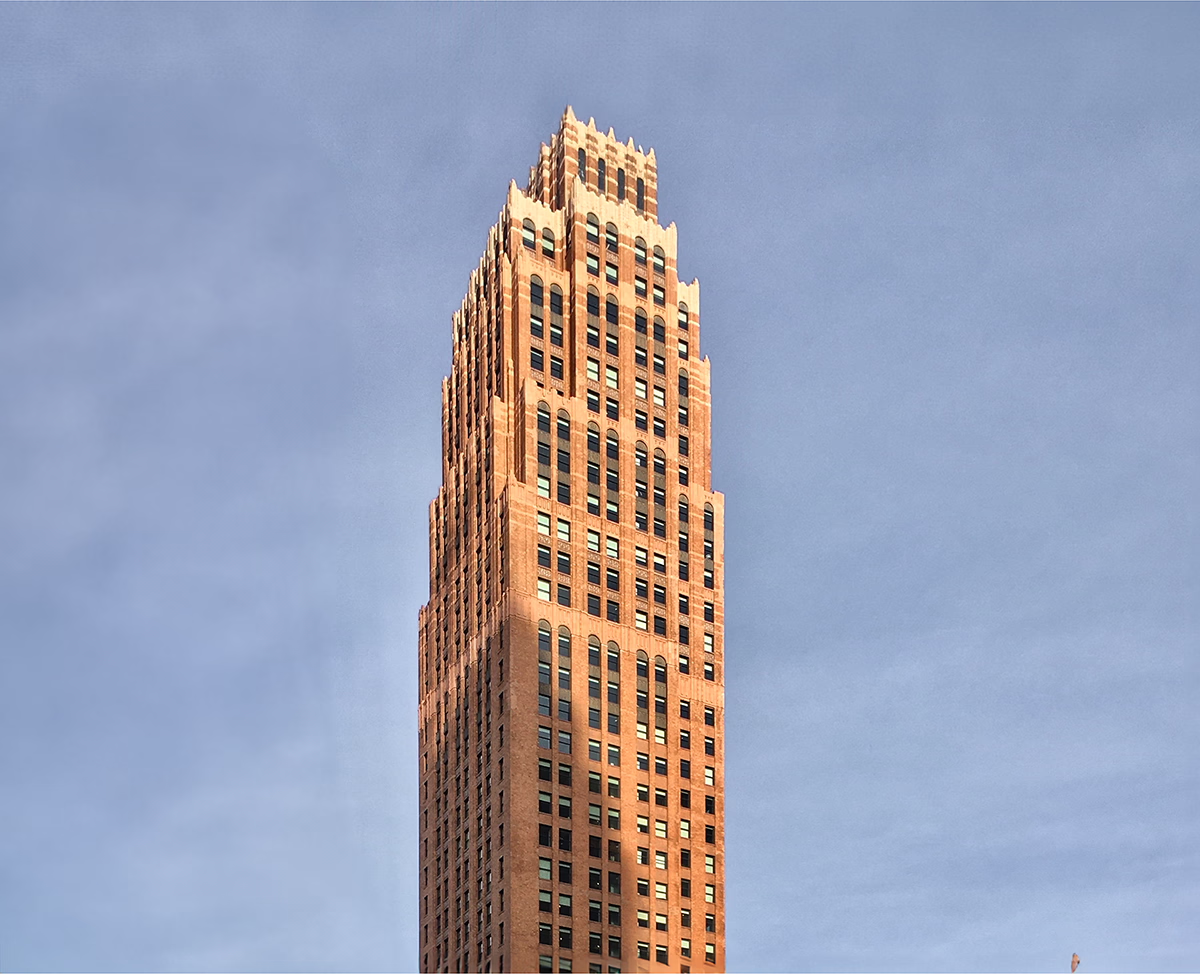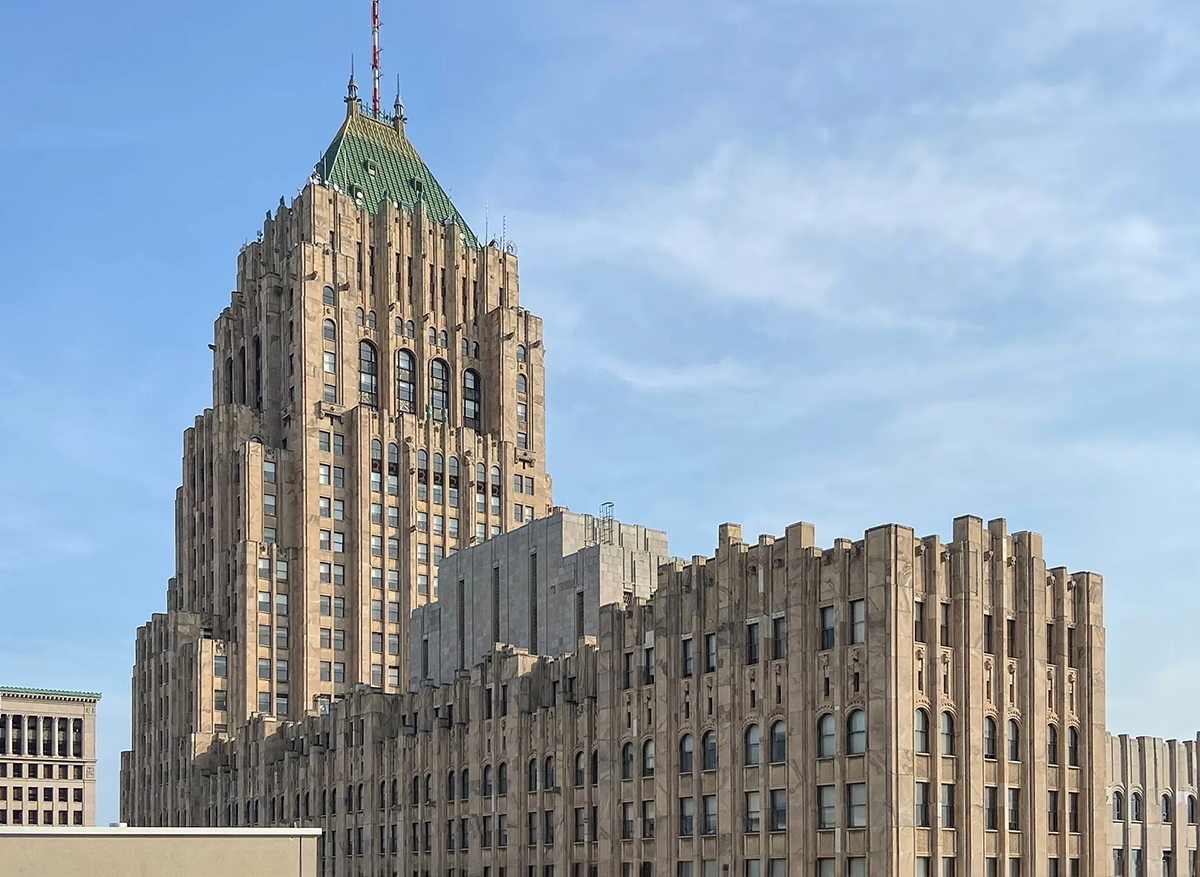David Stott Building vs Fisher Building


Comparing the David Stott Building and the Fisher Building is interesting because they both stand in Detroit, MI, and were completed just one year apart, but they were designed by different architects.
This offers a unique glimpse at how rival designers approached projects in the same city during the same era.
Height & Size
These two towers present an interesting contrast in their proportions. The Fisher Building rises higher at 443ft (135m), while the David Stott Building reaches 436ft (133m). However, the David Stott Building accommodates more floors with 38 levels above ground, compared to 30 floors in the Fisher Building.
This suggests different approaches to interior space design. The Fisher Building has an average floor-to-floor height of approximately 4.5m, while the David Stott Building has more compact floors averaging around 3.5m each. The taller building's more generous floor heights might indicate grander interior spaces, higher ceilings, or different programmatic requirements.
These different proportions likely reflect the specific needs each building was designed to serve, whether driven by zoning regulations, client requirements, or the intended use of the spaces within. The contrast shows how architects can achieve different spatial experiences even when working with similar overall building scales.
Architectural Style
Both the David Stott Building and the Fisher Building were designed in line with the aesthetic conventions of the Art Deco style.
At the time, this style was at the height of its popularity. So both Donaldson and Meier and Albert Kahn Associates followed what was in many ways expected of them, producing designs that fit comfortably within contemporary architectural norms, rather than breaking with convention.
Uses
The David Stott Building is primarily residential, while the Fisher Building is primarily commercial.
Originally, the David Stott Building was designed for commercial, but over time it was converted to residential. The Fisher Building by contrast has maintained its original role.
The David Stott Building offers 107 residential units.
The Fisher Building also provides 964 parking spaces.
Structure & Facade
Both the David Stott Building and the Fisher Building rely on a Frame structural system.
A frame structure uses a grid of columns and beams to carry the building's loads. This frees the walls from structural duties, allowing for flexible floor plans and larger windows.
They also employ the same type of facade, a Masonry facade.
A masonry facade gives the building a heavier, more traditional appearance. It often conceals a frame structure behind it, creating the look of solid walls without carrying the main loads.
| David Stott Building | Fisher Building | |
|---|---|---|
| Donaldson and Meier | Architect | Albert Kahn Associates |
| 1928 | Construction Started | 1927 |
| 1929 | Year Completed | 1928 |
| Art Deco | Architectural Style | Art Deco |
| Residential | Current Use | Commercial |
| 38 | Floors Above Ground | 30 |
| 132 | Last Floor Height | 104 |
| 133 m | Height (m) | 135 m |
| 138 | Tip Height | 149 |
| 21275 | Built-up Area (m²) | 45243 |
| 6 | Number of Elevators | 20 |
| Frame | Structure Type | Frame |
| Steel | Vertical Structure Material | Steel |
| Concrete | Horizontal Structure Material | Concrete |
| No | Facade Structural? | No |
| Bricks | Main Facade Material | Limestone |
| Stott Realty Company | Developer | Fisher Family |
| Corrado Parducci | Collaborating Artist | Géza Maróti, Corrado Parducci, Anthony De Lorenzo And Ulysses Ricci |
| MI | State | MI |
| Detroit | City | Detroit |
| 1150 Griswold Street | Address | 3011 W. Grand Blvd. |